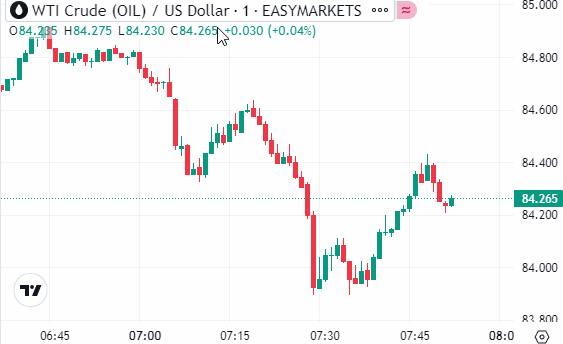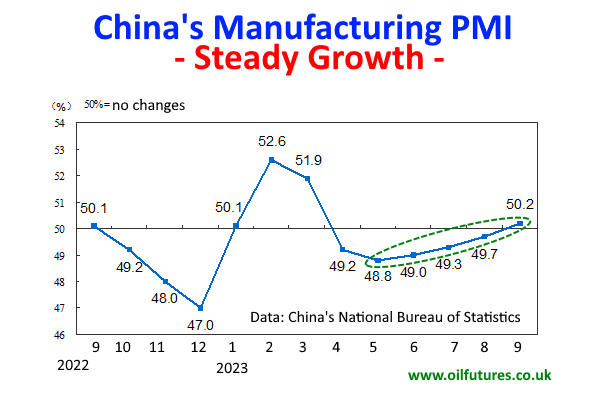 |
| Oil price fluctuation - Thursday, 5 October |
The price of crude oil substantially fell on Wednesday, despite the decision by the OPEC+ to sticking to the production cuts already made by Russia and Saudi Arabia.
The prices did not recover enough to gather momentum to reach $90 a barrel in the early hours on Thursday: as of 09:00 GMT, the prices of WTI and Brent were at $84.35 and $86.06 respectively.
The decision by the OPEC+ did not come as a bolt from the blue; on the contrary, it was widely expected, because both Russia and Saudi Arabia had explicitly said that the production cuts - 1.5 million barrels per day - would be extended until December, 2023. In this context, the meeting was more or less just routine and technical in nature - just for optics.
On Wednesday, however, there was a report stating a substantial gasoline build in the US by the EIA, US Energy Information Administration, that dampened the mood of the investors to some extent.
The unprecedented removal of the US House Speaker, Kevin McCarthy, from office by the hardline Republicans, meanwhile, added an additional dimension to the uncertainty in the markets: until a new speaker is elected, the deadline for getting the approval of the House for increasing government funds, at best, will remain in limbo and at worst, lead to a partial shutdown of the government.
The sharp rise in oil price has already started gnawing at the feeble recovery of the global economy: Hardeep Sing Puri, the Indian oil minister, for instance, did not mince his words, when he provided the media with the shocking data; "In the last 18 months, you have driven some 100 million people into poverty," said he before the latest OPEC+ meeting, while adding, "India, the world's third largest consumer, would prefer a price around $80 per barrel or less."
According to Mr Puri, the ideal price is about $70 a barrel that falls into the range that President Trump wants it to be in.
In an interview with Bloomberg, Mr Puri warned the producers about the unintended consequences in the events of stubborn production cuts, citing facts and figures from history.
As far as the major producers in the Middle East are concerned, as things stand, it may not be feasible at present. The reckless production cuts just to inflate the prices have taken its toll on their economies as well, because the inflation, mainly exacerbated by rising fuel prices, is a global menace, not that of the poorer nations.
As an inevitable outcome, the breakeven price of some major producers has gone up significantly after Covid-19 pandemic. Saudi Arabia, for instance, has to sell oil above $80 a barrel for its companies not to be in the red, according to the IMF.
On a positive note, as far as the stability of the oil markets are concerned, China's manufacturing activities show a steady growth. China's manufacturing PMI, a key indicator of its manufacturing trend, for instance, has been growing steadily since May this year.
In fact, it has crossed 50% threshold in September in such a way the Chinese authorities can breathe a collective sigh of relief, given the dangerously-evolving geopolitical development in the region - and beyond.
China's Manufacturing PMI - SeptemberAll in all, in the current circumstances the price of oil may come down to a value closer to $80 - eventually; unless a seismic shift in policy comes about in the US, the world's top oil producer and consumer, falling as far down as $70 a barrel is unlikely, though.
It may remain wishful thinking of the battered consumers for months to come.








